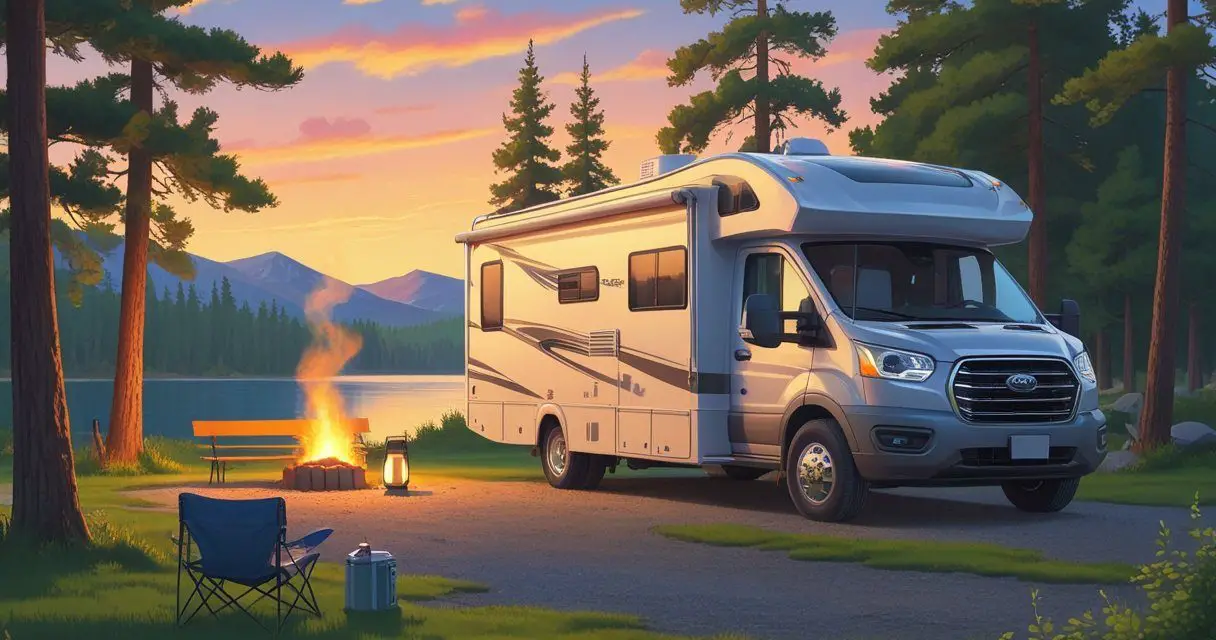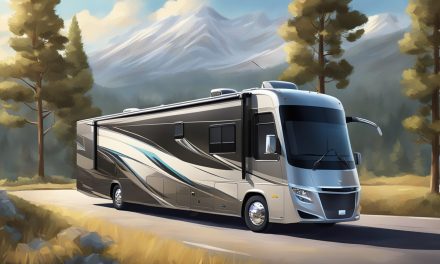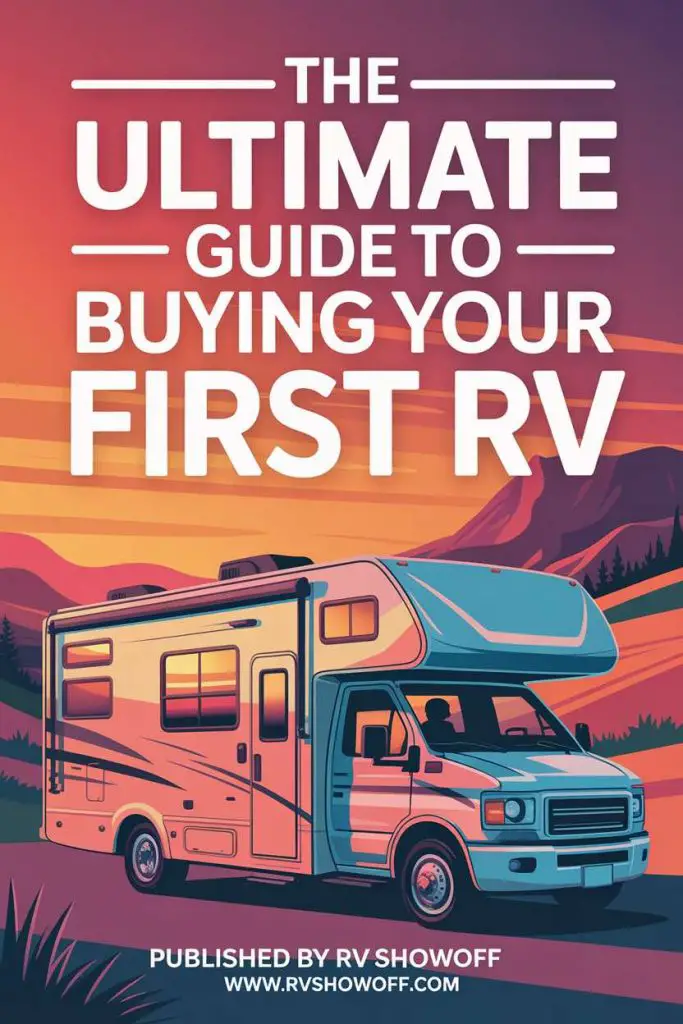Would you like to save this article?
When you buy an RV, you’re making one of the biggest decisions of your life—right up there with buying a house or choosing a college. But what happens when you actually live in that RV for eight long years? S & S and the RV Cats, along with their three feline companions (Seymour, Henry, and Alexander), have been full-timing in their fifth wheel since they took the plunge into nomadic life.
They started out knowing absolutely nothing about RVs. Like many first-timers, they were overwhelmed by the choices: Class A motorhomes that look like buses, Class C vans, travel trailers, fifth wheels, and converted vans. After months of research and dealership visits, they finally settled on a fifth wheel—and they’ve been rolling with it ever since.
But here’s the million-dollar question: Would they choose the same RV again? In their latest video, this adventurous couple gets refreshingly honest about what they love, what drives them crazy, and what they’ve learned after nearly a decade on the road. Spoiler alert: there’s a surprising issue with their slide that almost made them trade it all in.
Let’s dive into the eight biggest revelations from their RV journey.
1. They Almost Bought a Completely Different RV (Because of Their Cats)
When S & S first started RV shopping, they were laser-focused on one specific model: the Chaparral with a loft. Sharon absolutely loved that loft and could already picture herself relaxing up there with a good book. The couple was seriously considering putting money down on it.
But then they hit a major roadblock: the cats. The loft had a railing, and they worried that Seymour, Henry, or Alexander might jump down and get seriously injured. When you’re living full-time with three pets, safety isn’t just a priority—it’s everything.
According to the RV Industry Association, approximately 60% of RV owners travel with pets, making pet-friendly features one of the top considerations when purchasing an RV. Many manufacturers now design units with pet safety in mind, including lower windows, pet doors, and safer interior layouts.
Here’s the thing: You might think you’ve found your dream RV, but then your cat looks at a high railing like it’s an Olympic diving board, and suddenly you’re back to square one. Welcome to RV life, where your pets have veto power over six-figure purchases.
2. Fifth Wheels Are the “Goldilocks” of RVs
When the couple first started their research, they looked at five different types of RVs. Travel trailers were the most budget-friendly option, while Class A motorhomes came with eye-watering price tags that made their wallets cry. Fifth wheels sat right in the middle—not too cheap, not too expensive, just right.
But price wasn’t the only factor. S did his homework and discovered something important: travel trailers tend to sway while you’re towing them down the highway. Even with anti-sway bars, he’d seen plenty of travel trailers fishtailing behind trucks on the interstate.
Fifth wheels, on the other hand, are significantly more stable. Because they hitch over the rear axle of the truck (instead of behind it), they experience far less sway and provide a smoother, safer ride. According to Camping World, fifth wheels offer 25-30% better stability than travel trailers of comparable size, making them ideal for full-time travelers who spend hundreds of hours on the road each year.
Let’s be real: When you’re hauling your entire life behind a truck at 65 mph, “stability” suddenly becomes your favorite word in the English language. Nobody wants to watch their home doing the cha-cha in the rearview mirror.
3. That Massive Back Window Is Worth Its Weight in Gold
One of the biggest selling points of their fifth wheel? The enormous window in the back of the bedroom. Over the years, Sharon has made a tradition of sharing “Here’s the view out of our back window” moments with their YouTube subscribers, showcasing stunning sunsets, mountain ranges, and desert landscapes.
Having a large window transforms the RV experience from feeling like you’re living in a box to feeling like you’re part of the environment. Natural light floods the bedroom, making the space feel bigger and more open.
Research from the National Association of RV Parks and Campgrounds (ARVC) shows that RVs with larger windows and panoramic views have 40% higher satisfaction ratings among full-time RVers. Natural light and outdoor connectivity are crucial for mental health when living in smaller spaces long-term.
Truth bomb: That big beautiful window is amazing for scenic views… until you’re parked at a Walmart and wake up to someone’s RV septic hose three feet from your face. Suddenly, you’re shopping for blackout curtains real fast.
4. The Open Floor Plan Makes 400 Square Feet Feel Like 800
S & S absolutely rave about their RV’s open floor plan. The bedroom flows into the bathroom (except for a private toilet closet), and the kitchen opens directly into the living room. There are no unnecessary walls or dividers choking up the space.
The bedroom also features a fully mirrored closet that creates an optical illusion of even more space. Strategic use of mirrors is a game-changer in small living quarters.
| Floor Plan Type | Pros | Cons |
|---|---|---|
| Open Floor Plan | Feels spacious, better airflow, easier to move around, more social | Less privacy, noise travels, harder to heat/cool efficiently |
| Closed Floor Plan | More privacy, better temperature control, defined spaces | Feels cramped, darker, claustrophobic for some |
According to RV Travel Magazine, 72% of full-time RVers prefer open floor plans, citing the feeling of spaciousness and improved livability as primary reasons.
Real talk: An open floor plan is fantastic until your partner decides to watch TV at full volume while you’re trying to read. Suddenly, you’re fantasizing about walls—thick, soundproof walls.
5. Basement Storage Is the Unsung Hero
When you’re living full-time in an RV, storage isn’t just convenient—it’s essential. S mentions that one of his favorite features is the massive basement storage in the front of the RV. This pass-through storage compartment can hold everything from camping chairs and tools to bike racks and emergency supplies.
Basement storage (also called pass-through storage) is typically found in larger fifth wheels and Class A motorhomes. It’s accessible from both sides of the RV, making it easy to load and unload bulky items without crawling through the interior.
The Recreation Vehicle Industry Association (RVIA) reports that adequate storage is the #2 most important feature for full-time RVers, right behind bed comfort. Without proper storage, clutter quickly takes over the living space, making the RV feel even smaller.
Here’s what nobody tells you: Basement storage is amazing until you’re digging through five layers of camping gear in 95-degree heat trying to find that one specific wrench you need right now. You’ll seriously consider throwing everything out and living a minimalist lifestyle.
6. The Kitchen Counter Space Situation Is… Complicated
If there’s one thing S & S would change about their RV, it’s this: the kitchen counter space. Sharon openly admits that when they’re cooking meals, there simply isn’t enough room to work comfortably. Cutting boards, ingredients, pots, pans—everything competes for those precious few square feet of counter.
This is a surprisingly common complaint among RV owners. Many manufacturers prioritize aesthetics and open floor plans over practical workspace, leaving cooks frustrated and cramped.
RV Life Magazine conducted a survey of 1,200 full-time RVers and found that 68% wished they had more kitchen counter space, making it the single most common complaint about RV interiors. Some owners get creative by installing cutting board extensions, fold-down counters, or portable prep tables.
Let’s keep it real: Cooking in an RV kitchen sometimes feels like playing Tetris with your cookware. You’ll master the art of mise en place not because you’re a fancy chef, but because there’s literally nowhere else to put the ingredients.
7. Booth vs. Table: The Great RV Debate
Here’s a confession: Sharon really wanted a booth. You know, those cozy restaurant-style booths that make you feel like you’re dining at a 1950s diner? She loves them. But their RV came with a traditional table and chairs setup instead.
While it’s a minor disappointment, it speaks to a larger issue: you can’t have everything. When choosing an RV, you’ll inevitably have to compromise on certain features. The key is deciding which features are non-negotiable and which are nice-to-haves.
| Seating Type | Benefits | Drawbacks |
|---|---|---|
| Booth Dinette | Cozy, comfortable, converts to bed, saves space | Limited seating, hard to get in/out, one size fits all |
| Table & Chairs | Flexible seating, easy access, adjustable, can add more chairs | Takes up more floor space, chairs can slide around while driving |
Fun fact: You’ll spend the first year wishing you had a booth, and by year eight, you won’t even remember why you cared. Priorities shift when you’re living the nomadic life.
8. After 8 Years, They’d Choose the Same RV Again (Despite the Slide Issue)
Here’s the big reveal: Yes, they’d absolutely buy the same RV again. Despite looking at other options online (prompted by a concerning slide issue where the bottom of the slide is coming loose), S & S have decided to stick with their trusty fifth wheel for now.
Both agree that aside from the limited kitchen counter space, they’ve been incredibly satisfied with their choice. The RV has served them well through countless miles, three cats’ worth of chaos, and eight years of full-time living.
The slide problem is a common issue in older RVs. Slides are complex mechanical systems with motors, gears, seals, and rails that experience constant stress. According to RV Repair Club, slide-related repairs are among the most common maintenance issues for RVs over 5 years old, with costs ranging from $500 for minor adjustments to $5,000+ for complete slide mechanism replacement.
| Common RV Slide Problems | Typical Repair Cost |
|---|---|
| Seal replacement | $200 – $600 |
| Motor/gear repair | $500 – $1,500 |
| Rail realignment | $300 – $800 |
| Full mechanism replacement | $3,000 – $7,000 |
Despite this challenge, the couple’s willingness to repair rather than replace speaks volumes about their satisfaction.
The bottom line: When your eight-year-old RV’s slide starts acting up and your first instinct is to fix it rather than trade it in, that’s how you know you’ve found a keeper. That’s basically the RV equivalent of a lasting marriage.
What S & S Learned About Buying an RV
After nearly a decade on the road, S & S have some seriously valuable advice for anyone shopping for an RV:
1. Sit in the RV for as long as you need. Don’t feel rushed by salespeople. Most will leave you alone to explore. Get comfortable on the couch, lie on the bed, stand in the kitchen—imagine actually living there.
2. Visit RV shows. These events are perfect for browsing without pressure. You can walk through dozens of RVs in a single day, and salespeople are less aggressive at shows.
3. Take your time with research. Don’t rush into a decision you’ll regret. According to Statista, the average RV loan term is 15 to 20 years, making it a massive financial commitment. Some buyers end up underwater on their loans, owing more than the RV is worth.
4. Think about your pets. If you have animals, their safety and comfort should be a major factor in your decision.
5. Consider long-term livability. It’s easy to fall in love with an RV during a 10-minute walkthrough. But can you see yourself living there for years? Storage, counter space, sleeping arrangements—these “boring” details matter way more than fancy décor.
Final Thoughts: Eight Years and Counting
S & S’s story is proof that you don’t need the newest, fanciest, or most expensive RV to live a fulfilling nomadic life. Their eight-year journey in the same fifth wheel—with its limited counter space, slow-moving front legs, and recent slide issue—shows that happiness on the road comes from how you live, not what you live in.
Would they choose the same RV again? Absolutely. And that’s the highest compliment you can give any home—even one with wheels.
If you’re considering full-time RV living, take a page from their book: do your research, trust your instincts, and don’t be afraid to make yourself at home in every RV you tour. Your perfect rig is out there waiting for you.
And hey, if your cat has strong opinions about loft railings, maybe listen to them. They might be onto something.
SOURCES
- S & S and the RV Cats YouTube Channel – https://www.youtube.com/@SSandtheRVCats
- “Would We Buy This RV Again After 8 Years?” Video – https://www.youtube.com/watch?v=eGtgYRP9Rpw
- RV Industry Association (RVIA) – Pet Travel Statistics – https://www.rvia.org
- Camping World – Fifth Wheel vs Travel Trailer Stability Guide – https://www.campingworld.com
- National Association of RV Parks and Campgrounds (ARVC) – RV Satisfaction Studies – https://www.arvc.org
- RV Travel Magazine – Full-Time RVer Preferences Survey – https://www.rvtravel.com
- Recreation Vehicle Industry Association – RVer Storage Needs Report – https://www.rvia.org
- RV Life Magazine – Kitchen Counter Space Survey Results – https://www.rvlife.com
- RV Repair Club – Common Slide-Out Problems and Costs – https://www.rvrepairclub.com
- Statista – RV Loan and Financing Statistics – https://www.statista.com






